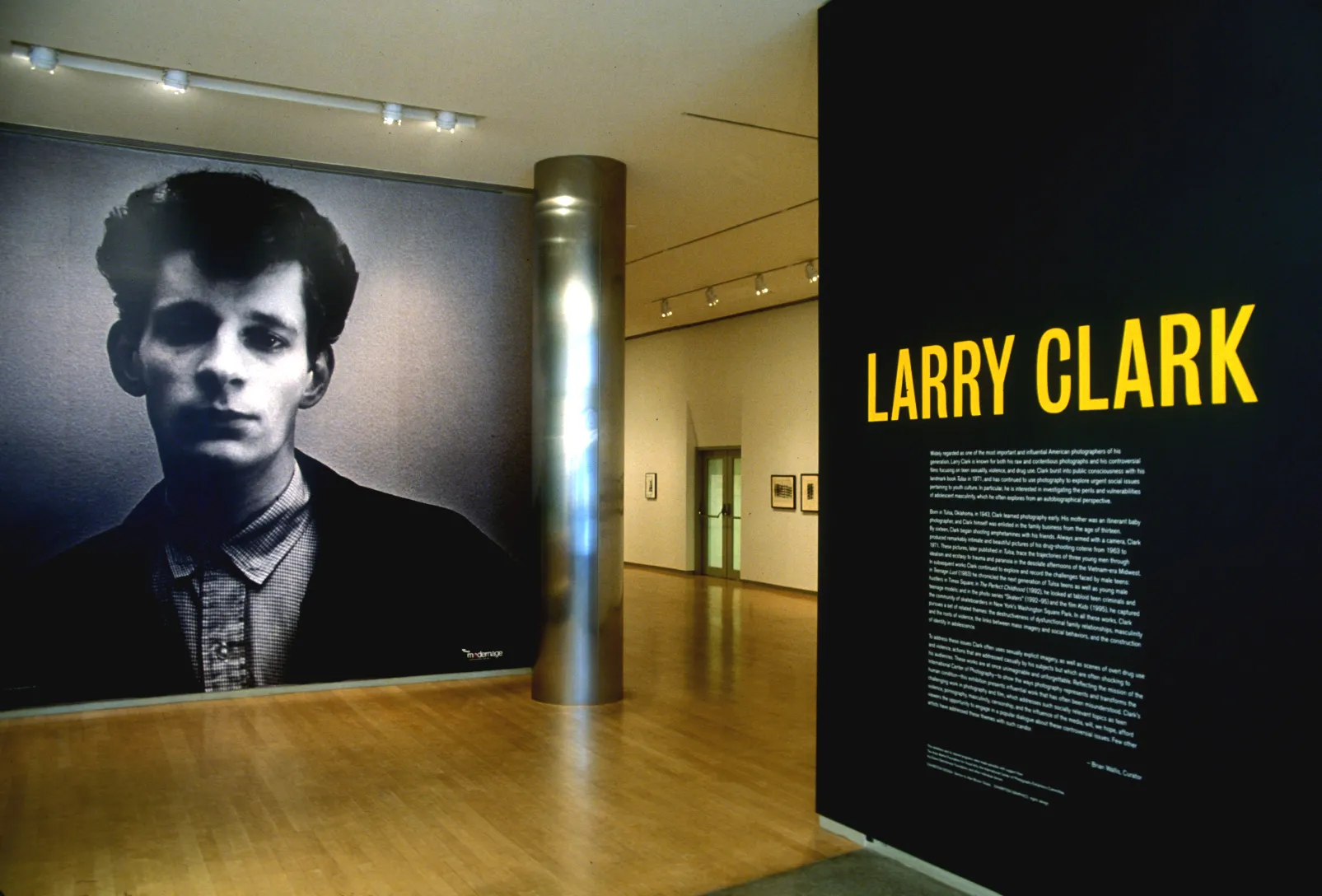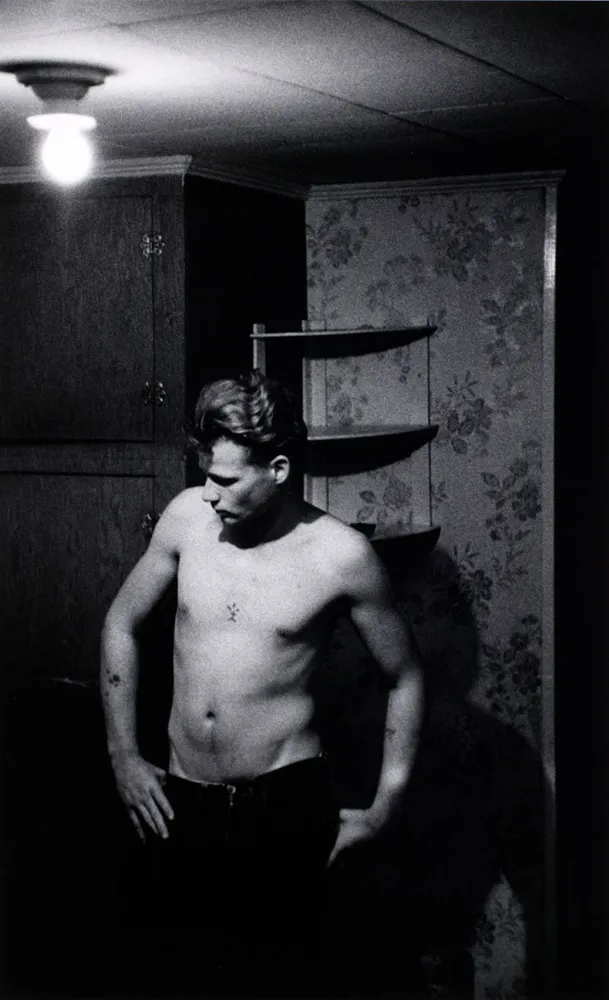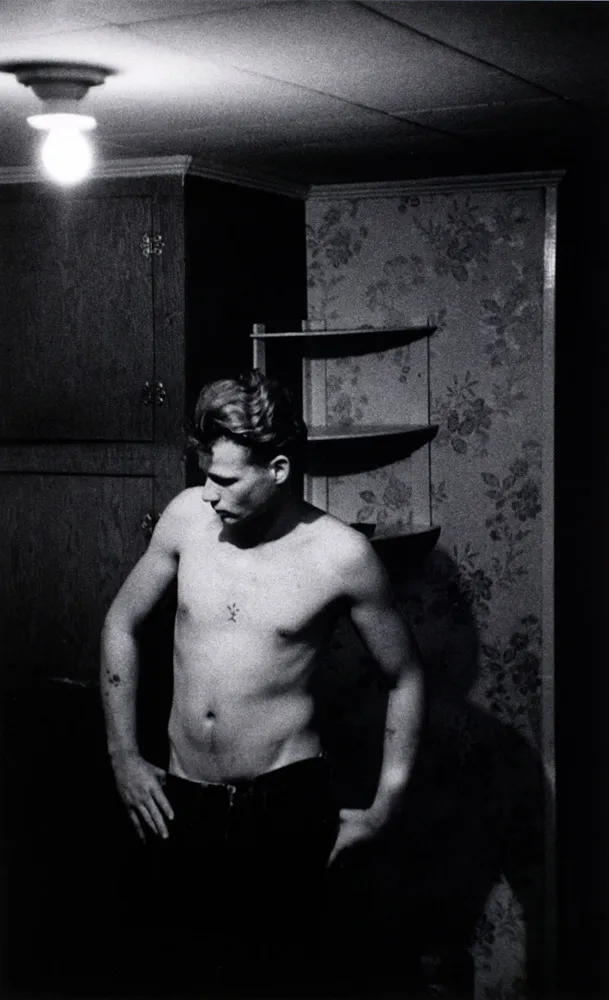Widely regarded as one of the most important and influential American photographers of his generation, Larry Clark is known for both his raw and contentious photographs and his controversial films focusing on teen sexuality, violence, and drug use. Clark burst into public consciousness with his landmark book Tulsa in 1971, and has continued to use photography to explore urgent social issues pertaining to youth culture. In particular, he is interested in investigating the perils and vulnerabilities of adolescent masculinity, which he often explores from an autobiographical perspective.
Born in Tulsa, Oklahoma, in 1943, Clark learned photography early. His mother was an itinerant baby photographer, and Clark himself was enlisted in the family business from the age of thirteen. By sixteen, Clark began shooting amphetamines with his friends. Always armed with a camera, Clark produced remarkably intimate and beautiful pictures of his drug-shooting coterie from 1963 to 1971. These pictures, later published in Tulsa, trace the trajectories of three young men through idealism and ecstasy to trauma and paranoia in the desolate afternoons of the Vietnam-era Midwest. In subsequent works Clark continued to explore and record the challenges faced by male teens: in Teenage Lust (1983) he chronicled the next generation of Tulsa teens as well as young male hustlers in Times Square; inThe Perfect Childhood (1992), he looked at tabloid teen criminals and teenage models; and in the photo series “Skaters” (1992-95) and the filmKids (1995), he captured the community of skateboarders in New York's Washington Square Park. In all these works, Clark pursues a set of related themes: the destructiveness of dysfunctional family relationships, masculinity and the roots of violence, the links between mass imagery and social behaviors, and the construction of identity in adolescence.
To address these issues Clark often uses sexually explicit imagery, as well as scenes of overt drug use and violence, actions that are addressed casually by his subjects but which are often shocking to his audiences. These works are at once unimaginable and unforgettable. Reflecting the mission of the International Center of Photography—to show the ways photography represents and transforms the human condition—this exhibition presents influential work that has often been misunderstood. Clark’s challenging work in photography and film, which addresses such socially relevant topics as teen violence, pornography, masculinity, censorship, and the influence of the media, will, we hope, afford viewers the opportunity to engage in a popular dialogue about these controversial issues. Few other artists have addressed these themes with such candor.




